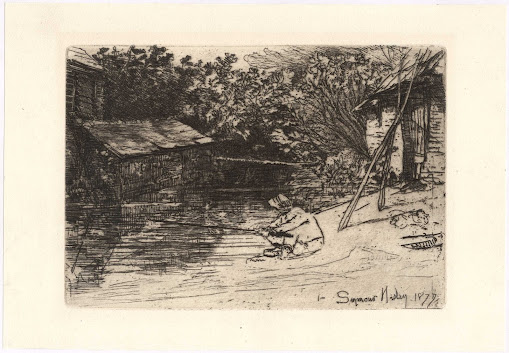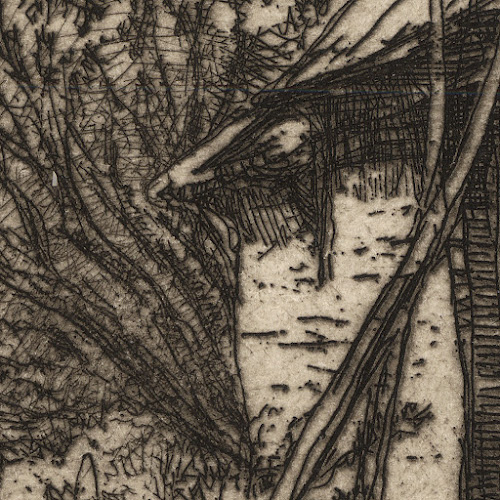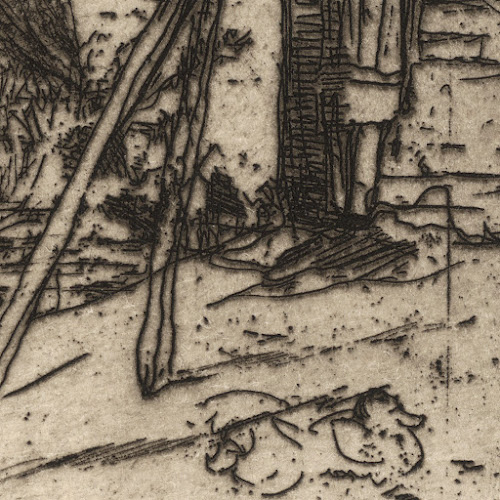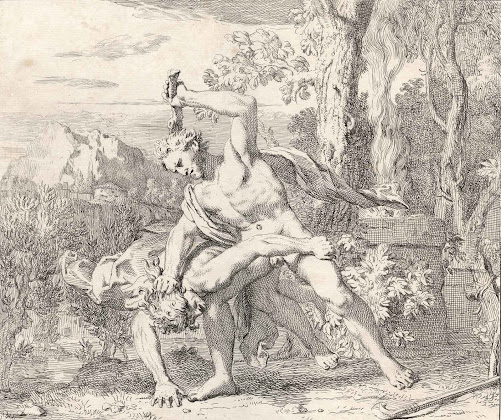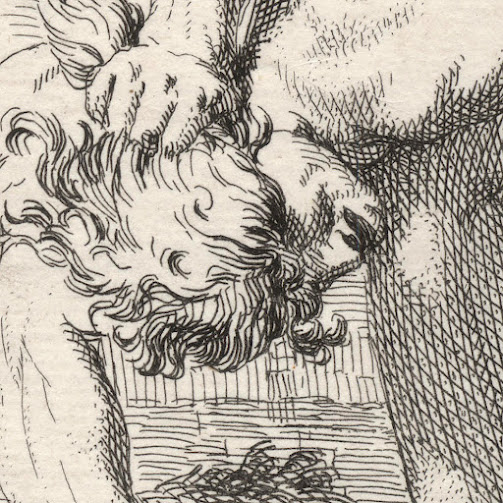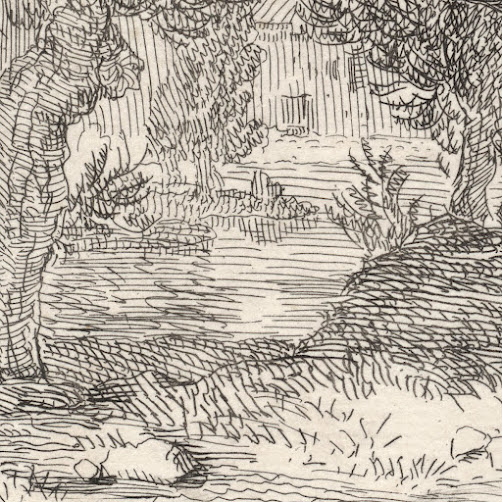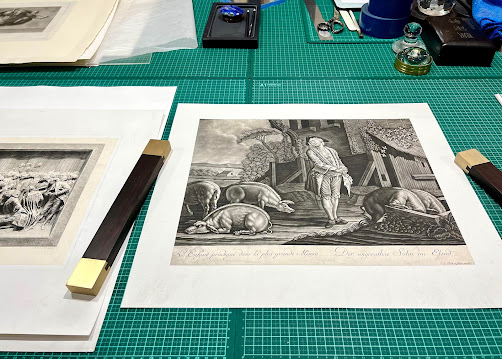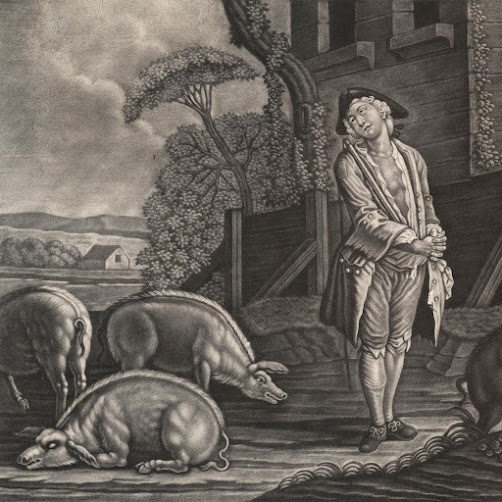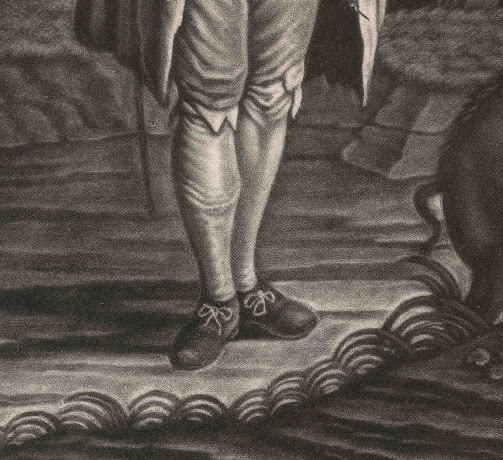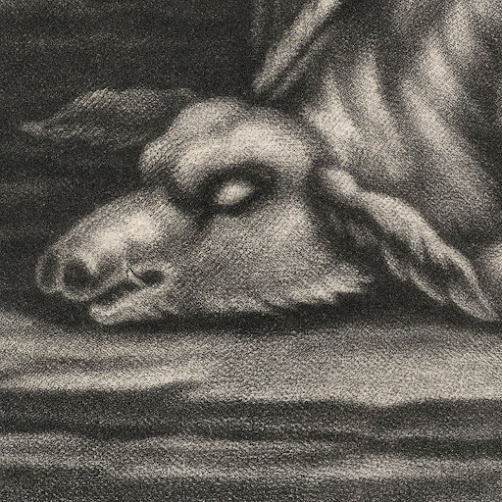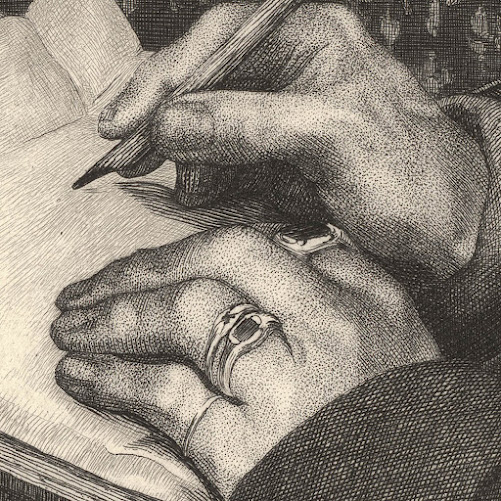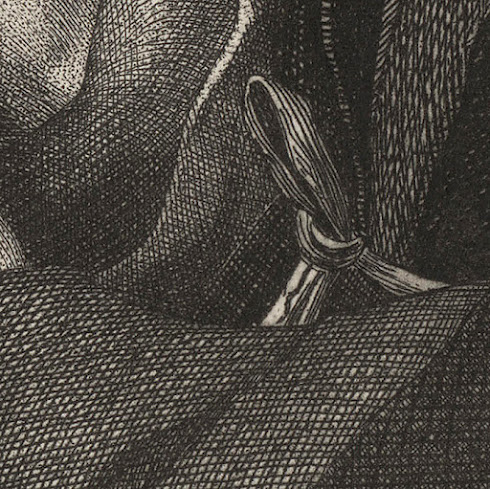Francis Seymour Haden (aka Sir Francis Seymour Haden; H Dean [used for RA
exhibitions]) (1818–1910)
“Ye Compleat Angler” (The
Complete Angler), 1877, first published in 1878 by
Hogarth and Sons (London) and later published in Philip Gilbert Hamerton’s,
“Etching and Etchers” (3rd ed., London, 1880). This impression
is from the 1880 edition.
Note: Hamerton’s, “Etching and Etchers” may be
downloaded free of charge at archive.org and it may be viewed online: https://archive.org/stream/etchingandetche00hamegoog?ref=ol#page/n4/mode/2up
Drypoint and etching and printed in a warm-black ink
with plate tone on cream laid paper with small margins.
Size: (sheet) 18.3 x 26.5 cm; (plate) 13.9 x 20 cm.
Signed in plate, at lower right: "Seymour Haden
1877".
State iii (of iii) with the bushes in the right
background shaded with oblique lines. Compare with the state i impression held
by the BM (https://www.britishmuseum.org/collection/object/P_1937-0612-216)
and the state ii impression also held by the BM (https://www.britishmuseum.org/collection/object/P_1925-0312-14).
S 161 (Richard S Schneiderman 1983, “A Catalogue
Raisonné of the Prints of Sir Francis Seymour Haden”, Wiltshire, Robin Garton
Ltd, p. 319, cat. no. 161 III); D 149 (Sir William Drake, “A Descriptive
Catalogue of the Etched Work of Francis Seymour Haden”); H 166 (Henry Nazeby
Harrington 1910, “The Engraved Work of Sir Francis Seymour Haden, P.R.E.: an
illustrated and descriptive catalogue”, Liverpool, H. Young and Sons, cat. no.
166 i, p. 83, ill.).
The British Museum offers the following description of
this print: “A young angler with a rod, wearing a bonnet, seated in profile,
looking left towards the river; behind, small cabins on either sides [sic];
trees seen in the background” (https://www.britishmuseum.org/collection/object/P_1910-0421-176).
See also the superb insights about this print offered
by Art of the Print: http://www.artoftheprint.com/artistpages/haden_francis_seymour_thecompleteangler.htm.
Regarding Haden’s approach to etching, Hamerton (1880)
in “Etching and Etchers advises: “A good principle to remember is, that for an
etching to look fresh we must avoid weariness. This is why Mr. Haden recommends
a single sitting; it seems to him that the freshness of the mind, its first
virgin impression of a subject, may be kept three or four hours, but not very
much longer. Before the mind acknowledges fatigue it loses its keen interest in
the subject which occupies it, and this keen interest is what we have mainly to
rely upon for the vivacity of our work. A jaded etcher is sure to spoil his plate.
Without making a rule to etch only plates of one sitting, which would confine
us to sketching, it is quite necessary to stop before the mind wanders or goes
on another tack” (p. 64).
Condition: a richly inked and near faultless
impression. The sheet has a patch of thinning (only visible when the sheet is
held to the light) otherwise it is in near pristine condition for the
age of the print with no tears, holes, folds, stains or foxing.
I am selling this richly inked and freely drawn drypoint
(with etching) by arguably one of the finest printmakers of the nineteenth
century for AU$280 in total (currently US$200.59/EUR176.92/GBP150.66 at the
time of this listing) including postage and handling to anywhere in the world, but
not (of course) any import duties/taxes imposed by some countries.
If you are interested in purchasing this quietly
unassuming etching, no doubt, made directly in front of his subject during his usual
self-imposed three-hour time limit, please contact me
(oz_jim@printsandprinciples.com) and I will send you a PayPal invoice to make
the payment easy.
Note that this is the second impression of this print
that I have listed (the previous impression has been sold).
